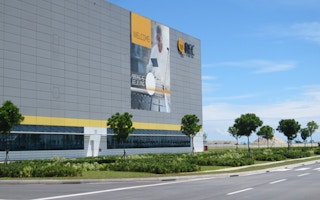Norwegian firm Renewable Energy Corporation opened one of the world’s largest integrated solar manufacturing facilities in Singapore today.
The $2.5 billion facility in Tuas marks a milestone as it is the largest single investment ever made by REC, and the largest cleantech investment ever made in Singapore.
Its chief executive Ole Enger said on Wednesday the opening of the plant was “a new dawn” for Singapore’s fledgling solar industry and REC.
The firm had first announced a $6.3 billion integrated solar manufacturing plant in Singapore in 2007. Singapore had trumped 200 other locations due to its highly-skilled workforce and business-friendly environment, said Mr Enger.
Prime Minister Lee Hsien Loong, who officiated the opening, said that the new complex is a “key piece in Singapore’s clean energy strategy”.
This industry had been identified as a major pillar of growth for Singapore, said Mr Lee. Singapore is positioned to contribute to such global energy solutions through technology advancements “while tapping the economic spinoffs”, he said.
REC’s Mr Enger noted the speed of progress on the plant yesterday. “When we first arrived, there was nothing but sand,” he told 500 guests at the plant opening. But it took only 18 months after construction began in June 2008 for the first solar module to be produced.
The project was not without challenges – a few months after it started, Oslo-listed REC was hit by the recent global financial crisis. But support from shareholders, banks and the Singapore Government helped to see the project through, said Mr Enger.
The project was even built under budget at $2.5 billion – REC had initially budgeted $3 billion for the first phase.
The firm had received an overwhelming number of applications for its job – 35,000 applications for just one advertisement, he noted. To date, the plant has employed 1,500 workers in Singapore and will employ up to 1,700 as capacity ramps up.
REC’s facility, which sits on a 321,000 sq m site, produces more than 190,000 solar modules per month, which are exported to European and American markets.
But demand from Asia is increasing, such as from Japan, Taiwan, Korea and more recently, China and India, said Mr Enger.
Initially volumes of 740 MW for wafers, 550 MW for cells, and 590 MW for modules were announced. The new capacity target for modules is 800 MW in 2012, representing an increase of 35 per cent compared to its design capacity.
Some 8,000 workers and 17 million man hours were required. The plant has environmental features and received the Gold Green Mark Award for environmental performance, in addition to having waste water recycling and energy recovery systems in place.
REC will take a breather from its breakneck speed of expansion for the moment, and will consider further expansion after 2011, he added.
Visitors at the opening yesterday were given a tour of the facility, which featured state-of-the-art robots and machines which processed pure silicon into solar modules.
Mr Enger noted that the cost of solar has decreased from US$70 per watt in 1976 to less than US$2 today.
“We are confident with the completion of REC’s plant that solar is here to stay and will be an important energy source in the coming years.”
This is the second major project the company has completed in 2010, with a new silicon production facility recently opened in the US.
Eco-Business.com’s coverage of the Clean Energy Expo Asia 2010 is brought to you by Conchubar Capital Management.













